The Vietnam War affected almost every American in the 1960s and ‘70s, including, of course, those of us in St. Louis Park. This first section honors the men who had ties to the Park who died serving their country. Following that are some milestones of the war and a description of some of the anti-war activities that went on close to home.
ST LOUIS PARK CASUALTIES OF THE VIETNAM WAR
The following men who had ties to St. Louis Park were killed in Vietnam. The web site www.virtualwall.org/istate/istatmn.htm indicates where their names are etched on the Vietnam Memorial in Washington, DC.
The Vietnam Veterans Memorial Fund Picture Project is managed by Jan Scruggs and the same organization that built the Vietnam Veterans Memorial Wall in Washington DC in 1982. The Education Center will be located behind the Memorial Wall and will be complete in several years. It is the hope of the VVMF to have at least one picture for each of the 58,000+ soldiers whose names are on the Memorial Wall. Heading up the search for photos of Minnesota casualties are Herb Reckinger, Jr. and Bob Ahles. Thanks to their efforts, we have photos of most of the men who had ties to St. Louis Park who gave their lives in Vietnam.
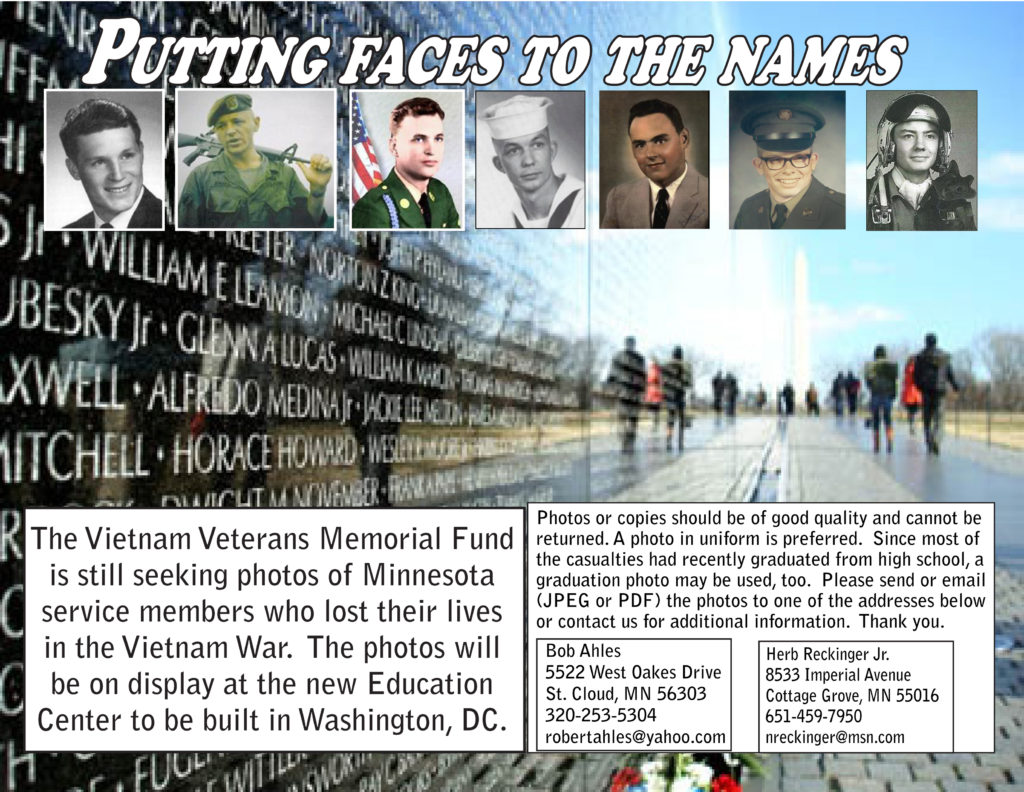
Major John Edward Bailey Born October 11, 1936. Died May 10, 1966. In 1973 his status was changed from MIA to KIA. It is unknown whether Major Bailey lived in St. Louis Park – he is officially listed as being from Minneapolis. However the obituary of his son, John Edward Bailey II, who was born in 1963, indicates that he grew up in the Park and that he went to Holy Family Catholic Church.
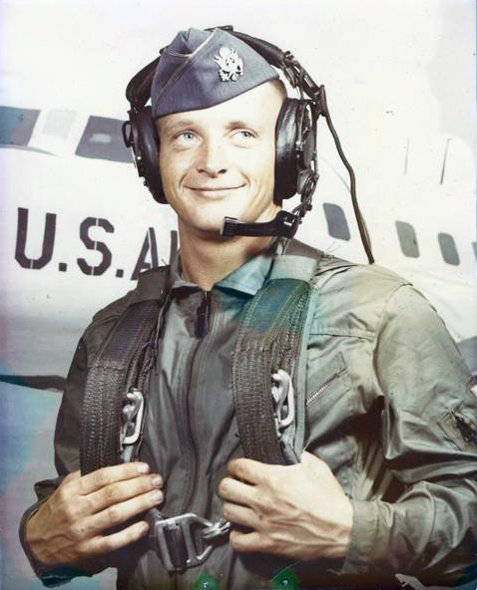
CPL Richard Vincent Blackburn Born September 18, 1951. Killed in action January 11, 1971. He is officially listed as being from Minneapolis, but at the time of his death his mother, Twila Bourdeaux, lived at 2921 Sumter Ave. in St. Louis Park. His father, Vincent L. Blackburn, lived in Mankato, Kansas. He was 19 years old.
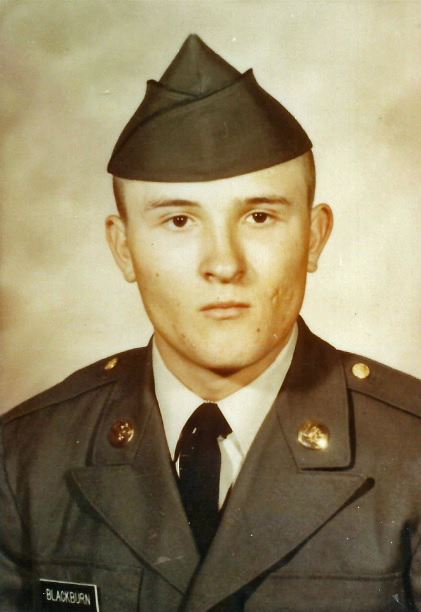
PFC Steven Craig Burns Born December 28, 1950. Killed in Action May 15, 1971. Ted Meland remembers: “Steve Burns lived on Division St and went to SLP schools. But sometime right around his graduation the family moved to another town [New Hope]. His dad, Lavern Burns, was a shop teacher at Central Junior High.” Robert is officially listed as being from Minneapolis.

PVT Kent Douglas Erickson Born 9/14/1951. Killed in Action 3/29/1971. St. Louis Park Class of 1969.
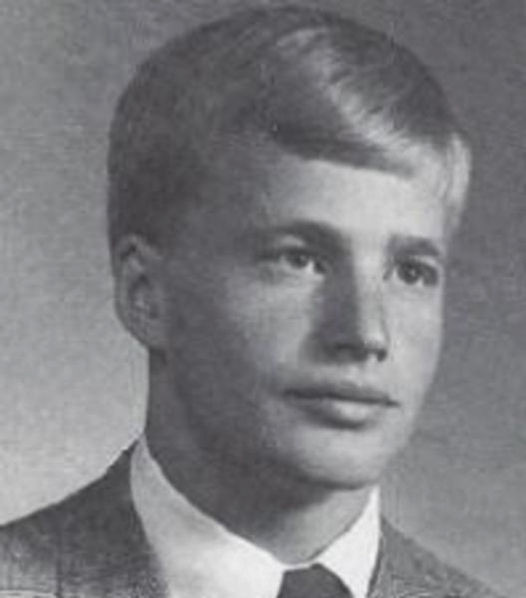
LCPL Gary Allan Farlow, Killed in Action 5/12/1967 – grew up in SLP, played Little League and Babe Ruth, attended Benilde HS, moved to Ohio. Not listed as a Minnesota casualty.
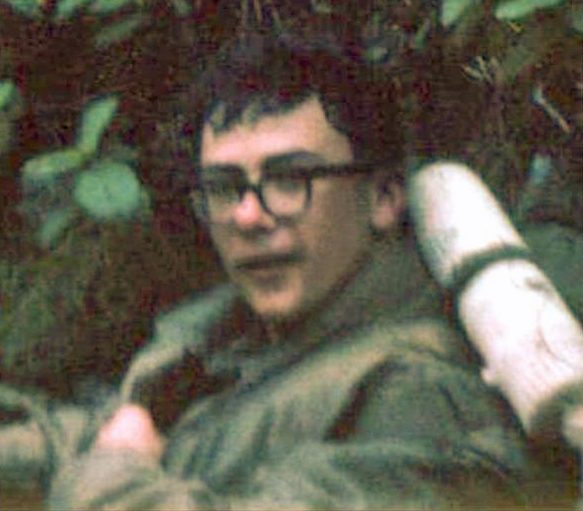
SP4 Patrick John Graham. Killed in Action on April 25, 1968. The Sun reported that Spec. Graham enlisted in the Army in September, 1966 and, after boot camp, volunteered for airborne duty. He graduated from airborne school at Fort Benning, Georgia in December 1966 and was transferred to Fort Bragg, North Carolina. He was sent to Vietnam in December 1967. He was killed while on a patrol near Hue after volunteering for advanced patrol duty. Graham graduated from Benilde High School in 1966. He was the son of Mr. and Mrs. Donald Graham, 3912 Kipling Ave. in St. Louis Park. He is officially listed as being from Minneapolis.
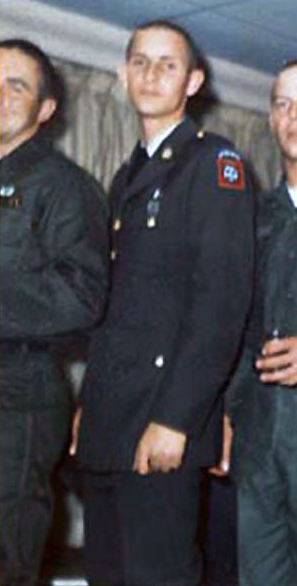
PFC Edward Stephen Graves Killed in Action on February 27, 1966. “Steve” Graves was a 1963 graduate of Park High and served as a paratrooper. His funeral was held at Holy Family Catholic Church. He is officially listed as being from Minneapolis.
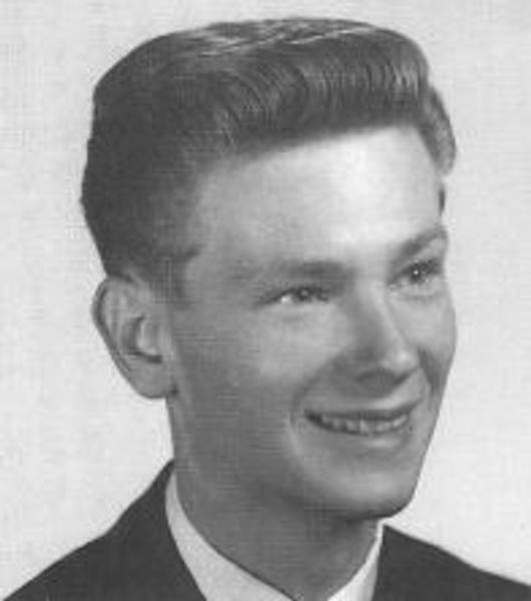
SP4 Jeffrey William Haerle Killed in Action May 13, 1968. Haerle was killed near Tay Nin when the Viet Cong launched a rocket attack against his Special Forces Camp at Nui Ba Den. He had been active in Little League, Babe Ruth, and Connie Mack baseball leagues, and graduated from Park High in 1964. He worked at Penny’s Super Market while in school and was a timekeeper at Toro Mfg. before joining the Army in January 1966. He was a member of Prince of Peace Lutheran Church. He was survived by his parents, Mr. and Mrs. Gerhardt W. Haerle, 7600 Minnetonka Blvd. At the time of his death his brother Clyde was also in the Army in Vietnam. Despite all of his ties to St. Louis Park, he is officially listed in DOD records as being from Minneapolis.
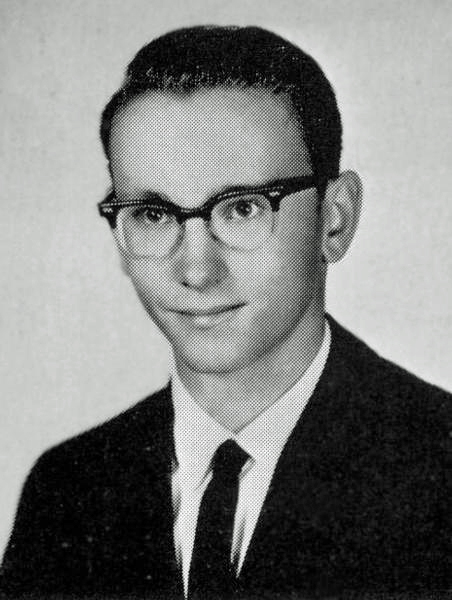
SP4 John Alvin “Butch” Ilstrup, Jr., Born June 27, 1947. Killed in Action: February 9, 1968. St. Louis Park High School Class of 1965.
Kevin Seldon shared this account of John’s last days:
John gave his life fighting in a horrible two-day fire fight in the area of Boa An Dong Vietnam. He was a radio operator with Bravo Company 1st Battalion 14th Infantry. During the afternoon, 1st Battalion 14th Infantry was heavily engaged with a large North Vietnamese force. Throughout the day, they engaged in horrendous firefights that often occurred at extremely close range (10-15 meters in some cases). As air strikes and gunship support scattered the entrenched NVA, Bravo Company was rushed to cut off the escape of the NVA and in doing so, Bravo Company was ambushed by a numerically superior enemy force. The file column of Bravo Company was completely cut in two when North Vietnamese recoiless rifle fire, B-40 rockets, and 82mm mortar fire cut 2nd Platoon off from the rest of the column. 2nd Platoon was subjected to horrendous fire and nine members of the platoon were killed and numerous men wounded. A dust-off helicopter that attempted to land was crippled and crash landed. 1st and 3rd platoon fought a bitter engagement to reach 2nd platoon and once they reached their beleaguered comrades, they could only get the wounded and were forced to leave the dead behind (Butch was among the dead.) The next day, following extensive air strikes and artillery preparation, Bravo and Delta Companies fought their way back into the ambush site from the previous day. They destroyed the remaining enemy bunkers and recovered seven dead soldiers of Bravo Company’s 2nd Platoon. Among those recovered was Butch, who was killed by multiple fragmentation wounds. The following day, Butch’s parents were notified of the horrible news. Those that knew him say he was a warm friendly young man who had a great sense of humor and was always looked up to by the neighborhood kids who he was always so nice to.
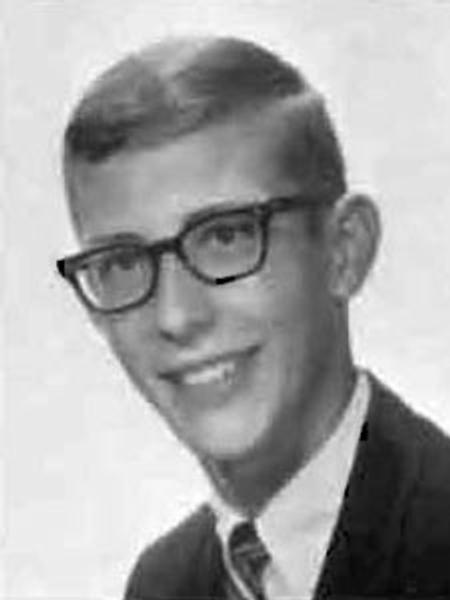
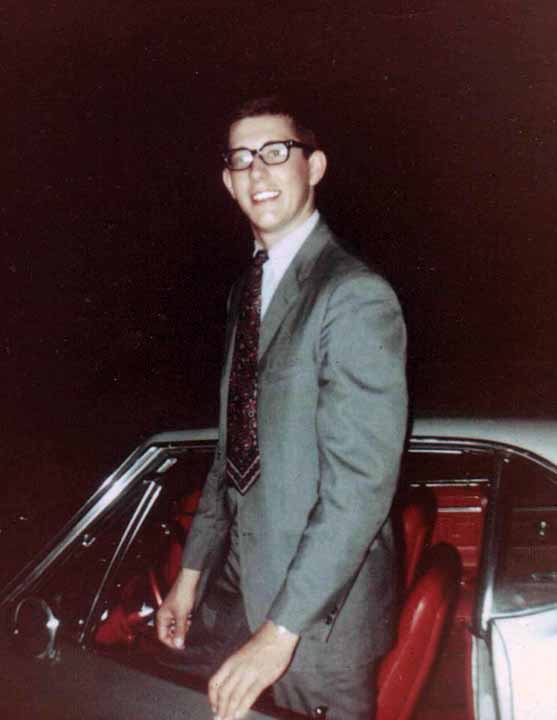
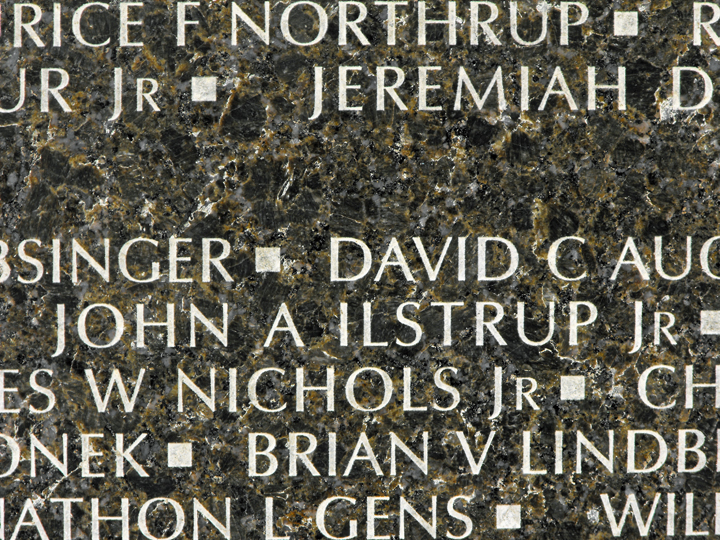
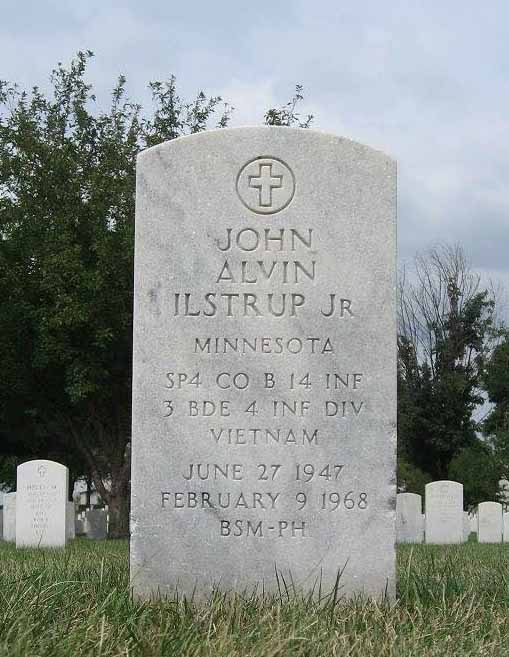
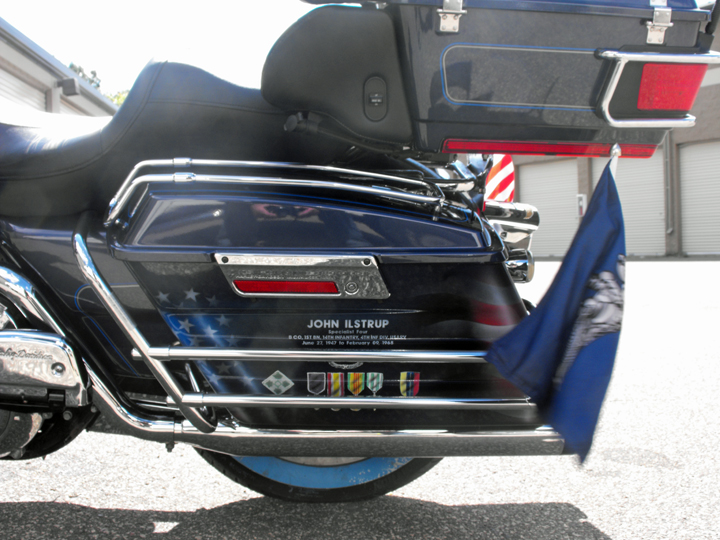
SP4 Warren Dean Johnson Born February 20, 1944. Died July 24, 1967. Warren graduated from Park High in 1964. He died in the Quang Ngai region of Vietnam. When he died Warren was married and living in Minneapolis.
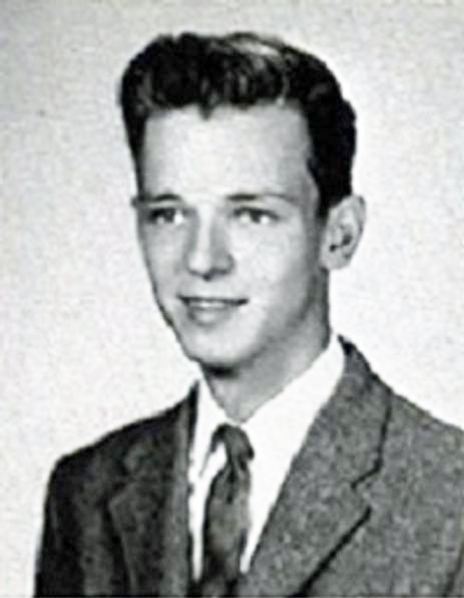
WO Donald Glenn Knowlton: Born November 3, 1940. Died October 20, 1965. Officially listed as being from Minneapolis.
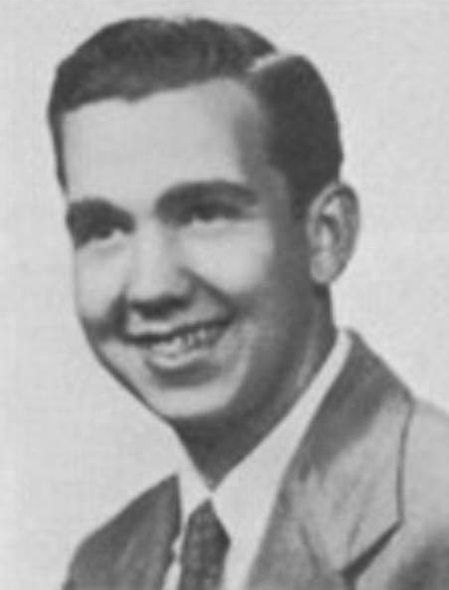
Navy Hospital Corpsman 3C Charles Thomas Langenfeld. Died on April 17, 1968, of wounds suffered near Khe Sanh during the Tet Offensive. He was the son of Mr. and Mrs. Matt Langefeld, 6861 Meadowbrook Blvd. Langenfeld had graduated from Watertown, SD High School and joined the Navy in 1966. He had served in Vietnam since December 1967. He was 21 years old. Not listed as a Minnesota casualty.

PFC Edward David Larson, Killed in Action 10/8/1966. Larson was one of three brothers in the Marine Corps at the time he was killed, the youngest at age 21. His obituary in the Dispatch said that he received a penetrating wound in his neck on September 21 while engaged in action with Company D, 1st Battalion, 26th Marine Regiment in the Quang Tri Province. Letters to his mother, Mrs. Lillian M. Larson, were optimistic at first, but his condition deteriorated.
Larson attended Lenox Elementary School and Central Jr. High School, graduating from Park High in 1963. He lived at 3201 Dakota and 2913 Georgia Avenues; at the time of his death, his mother lived at 1623 Brunswick. He had been active in the Boy Scouts and the Little League, and was a member of the St. Louis Park Evangelical Free Church. He played in the Varsity Band in high school, and in the Drum and Bugle Corps when in Marine Corps training. He enlisted in March 1965 and was sent to Viet Nam in July 1966. In his last letter home he wrote of his brother’s upcoming discharge, “his being home, out of the war … something I can’t see for myself.”
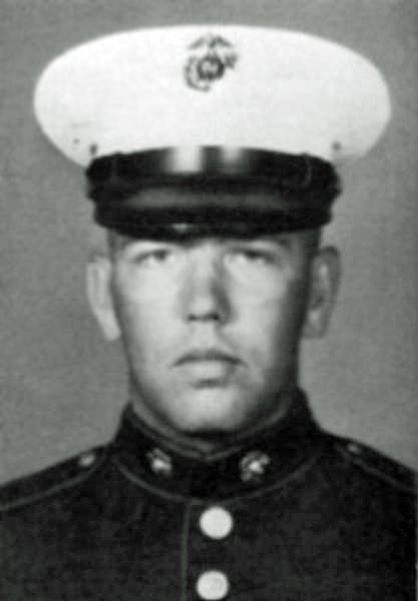
SP4 John Forman Lobsinger Born April 18, 1949. Killed in Action 1/23/1968. Photo below taken and provided by John’s friend Terry Kirberger, Park High Classmate and fellow Vietnam Vet.
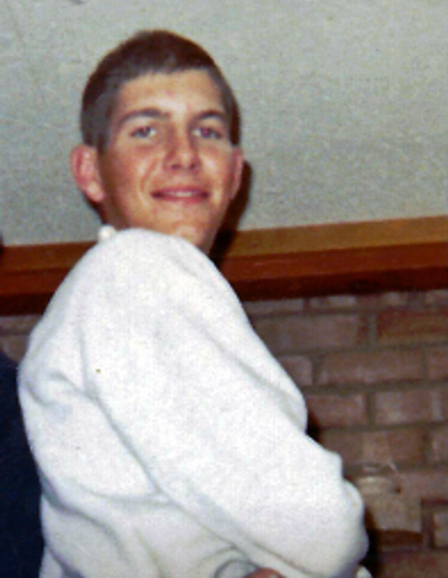
Dan Riordan noted “John Lobsinger was in our Boy Scout troop 250. I always looked up to him as a young Scout. I was in the 8th grade when he didn’t come home.”
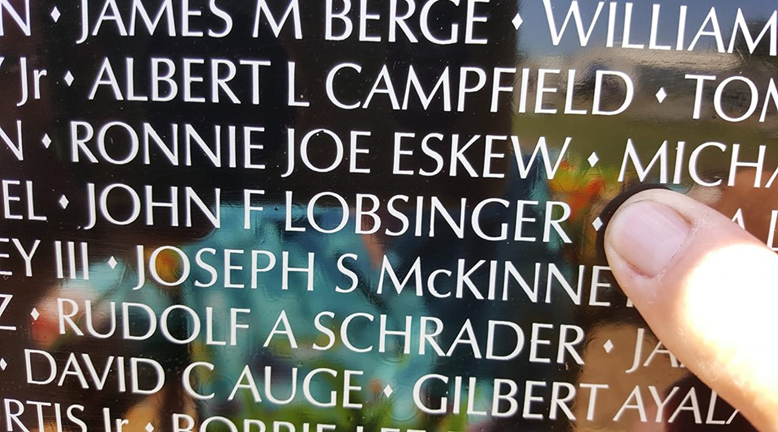
PFC John Thomas McDaniel John was born on March 24, 1947. He was a Private First Class in the Marine Corps; his job classification was Rifleman. He was Killed in Action on September 10, 1967 in Quang Tri Province – a ground casualty of artillery, rocket, or mortar.
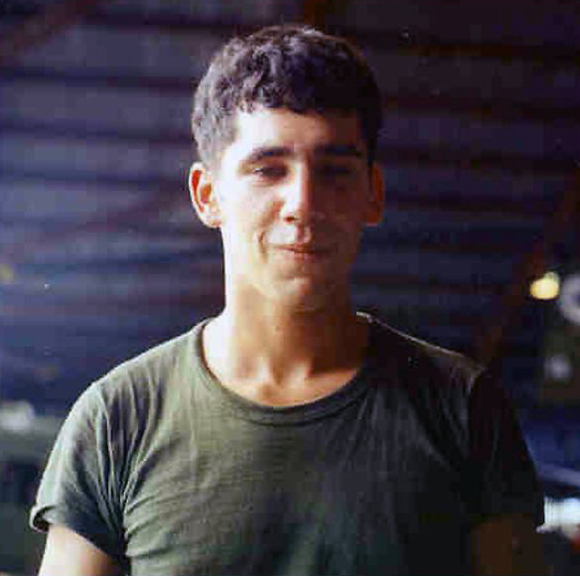
PVT Steven Dale Plath, Born August 28, 1950. Graduated from Park High in 1968. Killed in Action 3/28/1971
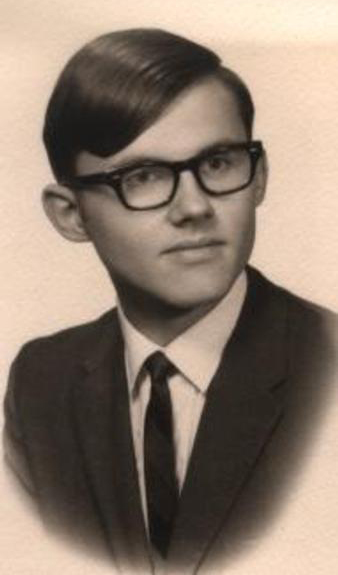
POSTED ON 3/2/01 – BY VETERANS, 1ST BN. 46TH INF. 198/196 BDES. AMERICAL
Slip off that pack. Set it down by the crooked trail. Drop that steel pot alongside. Shed those magazine-laden bandoliers away from your sweat-soaked shirt. Lay that silent weapon down and step out of the heat. Feel the soothing cool breeze right down to your soul … and rest forever in the shade of our love, brother. Steven Dale Plath was a member of Charlie Company, First Battalion, 46th Infantry, 196th Light Infantry Brigade, Americal Division. He is honored here by the veterans of 1/46th.”The Professionals,” of 1/46 came in-country via the USS Upshur on October 4, 1967 as part of the 198th Light Infantry Brigade. The 198th became part of the Americal Division. After one month of orientation at Duc Pho, the battalion was deployed north of Chu Lai and patrolled from Hill 54, Hill 69, LZ Young and LZ Baldy in Quang Tin Province. In March of 1969, the battalion moved to LZ Professional, in the mountains southwest of Tien Phuoc, Quang Tin Province, to relieve a battered 1/52 Infantry of the 198th. In July of 1969, 1/46, which had been operating under operational control of the 196th LIB of the Americal, became a permanent member of that brigade. The battalion operated from LZ Professional until August of 1970. In February of 1970, the battalion established a temporary firebase at LZ Mary Ann, at a remote mountain site near Hau Duc, Quang Tin Province. The battalion returned to Mary Ann in the summer of 1970 and operated from there and LZ Young, which was between Tien Phuoc and Tam Ky, during 1970 and 1971. The battalion left Mary Ann in April of 1971 when the Americal Division was deactivated and the 196th Brigade reverted to its status as an independent brigade and deployed at Danang, to provide security for the port. In June, 1972, 1/46 left Vietnam. Of the names on this wall, 233 of them, close to half the battalion’s actual field strength at any given time in Vietnam, were members of 1/46, or died while deployed with us.
WO Charles Edward “Chuck” Sellner. Born to Cletus and Pamella Sellner on September 4, 1944, in Ramsey County. Family lived at 2737 Idaho Ave. So. from @ 1951 to 1962. Began military service on March 11, 1968. Final rank was Warrant Officer. Helicopter pilot. Died on January 2, 1969, of burns after a non-combat crash in a helicopter in which he was a passenger. Tan An, Vietnam. Officially listed as being from Minneapolis.
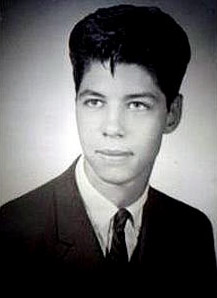
SP5 Joshua B. Stewart. Born November 21, 1943. Died March 15, 1973. Please note that although the website linked may say that he is from Salt Lake County, Utah, the National Archives confirms that he was from St. Louis Park, Minnesota.
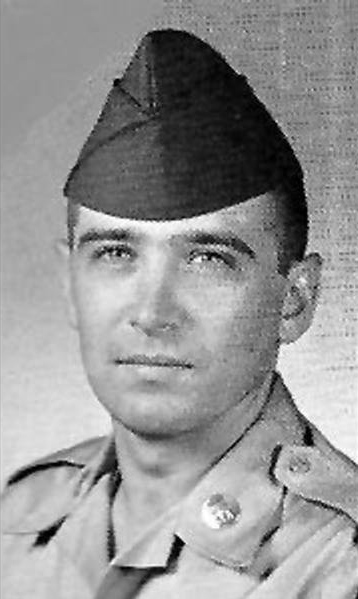
PFC John Kim Vogelsang Born October 9, 1945. Began tour on May 22, 1969, Killed in Action June 6, 1969: fragmentation wounds. Benilde Class of 1965
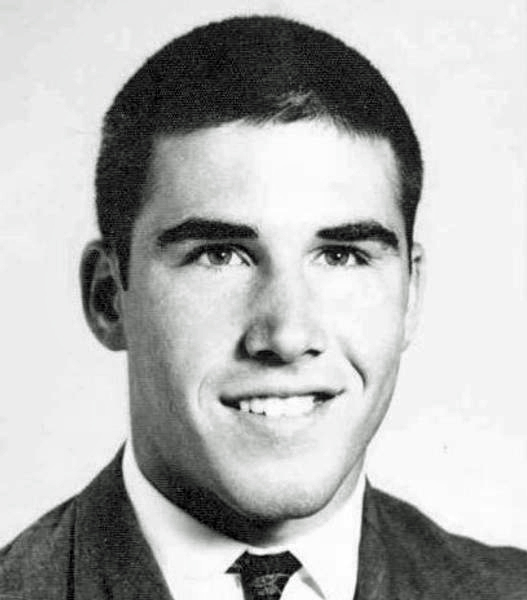
LCPL Gordon David Walensky Killed in Action on April 10, 1968. Walensky graduated from Park High in 1967 and joined the Marine Corps in June 1967. He served as a member of a radio relay and construction company, located near the Marine base at Danang. He was in a truck enroute to his battalion headquarters when he was fatally wounded by enemy rifle fire near Quang Nam. He was the son of Mr. Mrs. Norman Walensky, 2836 France Ave., St. Louis Park. A Sun article entitled “‘Great Hopes’ Die With Local Youth in Vietnam” reported, “The only Jewish Marine in his battalion, Cpl. Walensky never complained about a thing, and aunt said this week, except that there was no hot food to eat. He lived on ‘C’ rations while in the field, she said.”
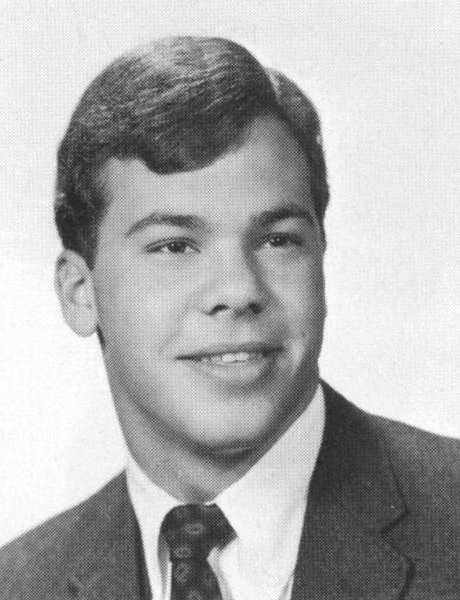
SGT James Robert Weisler, Killed in Action 10/2/1969 – Class of 1965
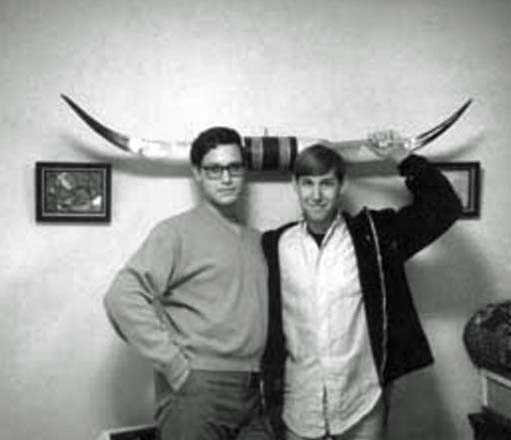
MILESTONES OF THE WAR AND ANTI-WAR ACTIVITIES
Much of this information was taken from a History Channel documentary, the pages of the St. Louis Park Dispatch, and materials provided by Marv Davidov, founder of the Honeywell Project. Please contact us if you have additional information.
1950
U.S. “advisors” arrived beginning in 1950 to help the South Vietnamese beat back Ho Chi Minh’s Viet Minh, who were seeking to unite the country, but were seen as dangerous Communists. Justification for entering the otherwise civil war was the so-called “domino theory,” which posited that if Vietnam fell, then Laos, Cambodia, etc. would also fall.
1959
U.S. Military Assistance and Advisory Group (MAAG) trained Vietnamese forces under Lieutenant General Samuel Williams. The first American was killed on July 8, 1959.
1960
John F. Kennedy was elected President and pressed for expansion of U.S. Special Forces. Lt. General Lionel McGarr assumed command in Vietnam.
1961
The first U.S. Special Forces are deployed to Vietnam.
1962
Major General Charles Timmes assumed command. Counter insurgency escalated and additional advisors were sent. Military Assistance Command Vietnam (MAVC) was established under General Paul Harkins.
Two Minnesotans were killed or declared missing in 1962.
1963
The Diem government was overthrown and Diem and his brother Nhu were assassinated.
President Kennedy assassinated on November 22, 1963.
Three Minnesotans were killed or declared missing in 1963.
1964
General William C. Westmoreland assumed command of MACV on June 20.
Congress passed the Gulf of Tonkin Resolution on August 2, 1964, giving President Johnson broad powers to deploy troops. The name came from the so-called Gulf of Tonkin Incident, where the USS Maddox was attacked by the North Vietnamese. It is widely thought now that this attack never actually happened and was instead a misreading of radar. Johnson ordered the attack on North Vietnamese patrol boat bases.
Two Minnesotans were killed or declared missing in 1964.
1965
On March 2, 1965, Operation Rolling Thunder began, with the U.S. bombing North Vietnam. Conspicuously absent from the target list was Haiphong Harbor, which frustrated the U.S. troops. The harbor could not be bombed because the Soviet Union kept a ship there and the U.S. did not want the war escalated to include the USSR or China.
On March 3, 1965, the first 3,500 ground troops landed, with Marines deployed to defend the air base near DaNang. General Westmoreland’s strategy was simply to find Viet Cong and kill them, with the assumption that if the U.S. killed enough of his people, Ho Chi Mihn would give up. The first US Marine infantry battalion arrived in Da Nang on March 8. By the end of the year 200,000 US troops were in Vietnam.
An article in the August 15, 1965, issue of the Dispatch reported that the September draft call had increased as a result of President Johnson’s decision to step up military manpower in Vietnam. Col. Robert P. Knight, director of Selective Service in Minnesota, reported that the quota for Minnesota was 805, while the national total was 27,400. Hennepin County Local Board No. 49, which included St. Louis Park, had a quota of 26 men for September 1965.
33 Minnesotans were killed or declared missing in 1965.
1966
A headline in the January 12, 1966, issue of the Echo:
Park Boys Now Serve Armed Forces in Viet Nam
Vietnamese Villagers Evoke Sympathy as Victims of “Hideous Treachery”
MaryAnne London interviewed the mother of brothers Matthew and Paul Solovskoy, and Dave Stimson. All three former Park students has enlisted. Mrs. Solovskoy said that her sons had enlisted “because of the exciting army atmosphere of their childhood. They just never got the military out of their systems.” Mrs. Stimson “deduced” that Dave joined because “he didn’t know why he was in School.” A letter home from one of the Solovskoy brothers said:
The first time I heard the sound of mortar rounds was when a suicide squad attacked our camp. I was scared beyond belief. I will never, as long as I live, forget that sound.
Flares and bursting bombs lit up the area with an eerie whiteness, but fear vanished as we were too busy with keeping alert and alive. We were ordered to shoot at everything that moved, as we knew anything outside was bogie. This was wrong, but I believe that it kept us alive that night.
After seeing the bodies of my buddies torn up with shrapnel and a friend with a shoulder pumping a bright red blood, this has become a personal war. I hoped I’d be spared the act of actual killing, but it was either him or me, mom!
The boys reacted with compassion towards the villagers, who “just want to be left alone to raise their food. Matt Solovskoy wrote that “the Vietnamese kids are the cutest imaginable, but are covered with sores. We should be sending doctors, medicine and kindness.”
Paul wrote to his mother, “You know, this war is bring about the greatest thing that could happen to the United States, nationalism. Do you know the full meaning of the word? I spent one hour in history class in tenth grade listening to a fine lecture by Mr. Roy on nationalism. Our whole country would be a million times better off if it had more of that spirit.”
- George Paul Solovskoy served in the military from 1963 to 1967. He died from a head injury in France in 1972.
- Matthew Solovskoy served in the military from 1964 to 1967. He died of lung cancer in 2008.
The first B-52 raids on North Vietnam began on April 12, 1966.
The Minnesota Committee to end the War in Vietnam conducted a Teach-In at Coffman Memorial Union at the U of M on November 7, 1966.
111 Minnesotans were killed or declared missing in 1966.
1967
Operation Cedar Falls began in the Iron Triangle near Saigon in January. On February 12, Operation Junction City began northwest of Saigon.
The June 9, 1967, issue of Westwood Jr. High’s Westwinds newspaper reported that the school’s first debate team debated “Resolved: That the U.S. should withdraw all armed forces out of Vietnam.”
Vietnam Veterans Against the War was founded by six Vietnam war veterans, including Jan “Barry” Crumb, Mark Donnelly, and David Braum, in New York City in June, 1967, after they marched together in the April 15, 1967 Spring Mobilization to End the War anti-war demonstration with over 400,000 other protesters.
About 200-400 people participated in a Peace March on August 5, 1967, to commemorate the bombing of Hiroshima and to protest the U.S.’s increasing involvement in Vietnam. The march started at the Mayo Auditorium on the St. Paul Campus of the U of M and traveled down Raymond Ave. and University Ave., ending at Loring Park. The march was announced in the news segment the previous day, which was the day the Monkees took over as guest disk jockeys at KDWB. There was also a rally at the Mayo Auditorium on the night of August 4; the Tribune’s report said that one of the main speakers, John Wilson from the Student Nonviolent Coordinating Committee, had to cancel.
An October 25, 1967, article in the Echo reminded boys that within five days after he becomes 18 he must register with the Selective Service System. “This means that some time thereafter he will probably either face the prospect of being drafted or enlisting into some branch of the armed forces.”
The Echo embarked on a series of articles describing what could be expected in the various branches of the military, starting with the Marines.
In November 1967 Park High Principal Bertil Johnson stated that students were entitled to hear different views on controversial subjects, thus approving 11th grade English teacher David Litsey’s request to allow 1963 Park graduate Lester Stern to address the class. Stern had been a participant in the March on Washington.
By the end of 1967 U.S. troop strength is nearly 500,000.
208 Minnesotans were killed or declared missing in 1967.
1968
The generation gap was real, with sides lining up supporting the government or protesting its actions. One Parkite remembers that “In the late sixties Readers Digest included a flag decal in an issue of their magazine. Shortly after that John Prine came out with his song ‘Your Flag Decal Won’t Get You Into Heaven Anymore.'” The undated ad below from the Star and Tribune also countered the so-called “super-patriot” by selling “Peace” and “Equality” decals. Many years later we are still seeking Peace and Equality.
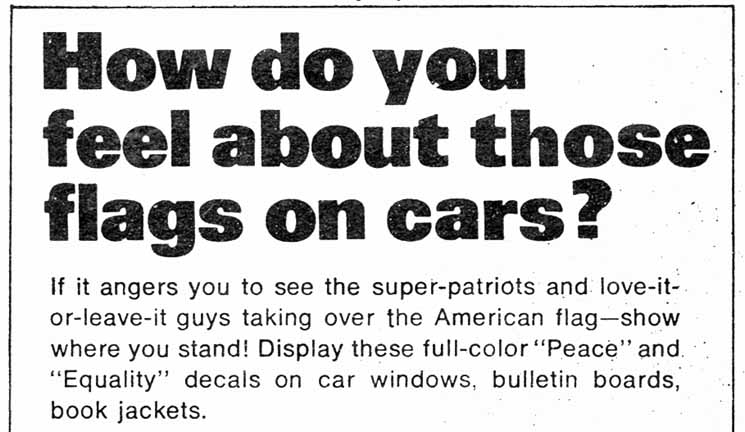
The Tet Offensive began on January 30-31, 1968, when the Viet Cong attacked Saigon and over 100 towns, villages, and cities. This surprise attack contradicted statements by Johnson and Westmoreland that the end was in sight.
The city of Hue was retaken by U.S. and South Vietnamese forces on February 24, 1968, ending the Tet Offensive.
On February 27, 1968, Walter Cronkite went on the air and opined that the war could not end any other way than in a stalemate.
On March 16, 1968, American troops massacred hundreds of civilians in the Village of My Lai. An American helicopter crew landed and put a stop to it. The incident was covered up by officers until November 1969. Only. Lt. William Calley was ever convicted, sentenced to 40 months, mostly spent in his apartment at Fort Benning, Georgia.
The Park High Echo reported that Norman Mailer spoke against the war at Northrup Auditorium in March 1968.
On March 31, 1968, President Johnson announced that he would not send the additional 200,000 troops that General Westmoreland wanted, that he was initiating peace talks, and that he would not run for re-election.
On April 5, 1968, the Siege at Khe Sanh was broken.
The Paris Peace Talks began on May 11, 1968.
On June 10, 1968, General Westmoreland was replaced by General Creighton Abrams. Abrams ended the body count method of determining success, the “find and kill as many as you can” battle plan, and instead sought to win the “hearts and minds” of the Vietnamese people.
On June 24, 1968, Vietnam became the longest armed conflict in U.S. history.
At the Democratic National Convention in Chicago, Police and demonstrators clash violently as the country looked on; August 26-29, 1968.
On November 6, 1968, Richard Nixon was elected president.
On December 8, 1968, activist Marv Davidov organized the Honeywell Project, with the purpose of stopping Honeywell from making deadly cluster bombs that were killing civilians in Laos. Davidov was a major force in Twin Cities activism and merited a half page obituary in the StarTribune when he died on January 14, 2012 at age 80.
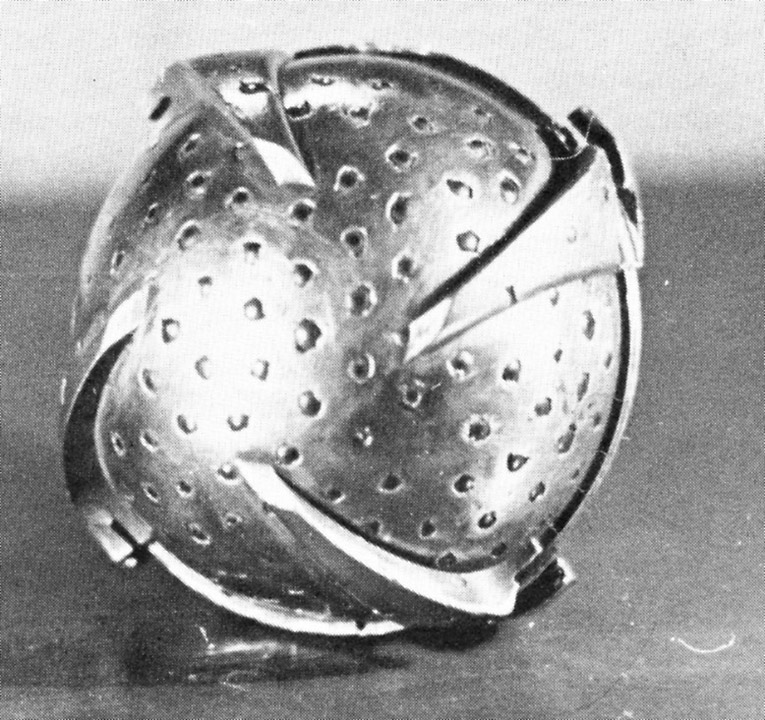
At the end of 1968 there were 540,000 Americans in Vietnam.
332 Minnesotans were killed or declared missing in 1968.
1969
Nixon was inaugurated in January 1969, promising “peace with honor.”
The Park High Echo of January 29, 1969, included two pages on the draft. Included was a notice about a study series to take place at Westwood Lutheran Church. An interesting note said “Warn us of your coming by calling…”
- February 10: “The Law Says” – Maj. Abrahamson
- February 17: “Resistance & C.O.” – Dave Pence, resistor
- February 24: “If I Enlist” – The Military
The same issue noted that Park’s Debate topic was “Resolved: That the United States should establish a system of compulsory national service by all citizens.”
The Twin City Draft Information Center (TCDIC) was the Minnesota area coordinator of the Resistance, a nationwide movement of men who refuse all cooperation with the Selective Service. It started at the draft card burnings at the Mobilization in New York on April 15, 1967, and spread to nearly every large city, coming to the Twin Cities in September 1967. By 1969 the local group had 17 full time and 100 part time counselors, led by former U of M student Greg Mills. The Echo reported: “The purpose of the counseling is not to persuade men to take any particular course of action, but rather to inform them of their alternatives and help them to understand fully the decisions they must make.”
Nixon ordered the bombing of Cambodia in March 1969.
In May 1969 the Honeywell Project leafleted workers at the St. Louis Park plant, handing out information about cluster bombs. Concerned citizens tried to get the City Council to change the zoning law to get rid of the plant.
In May 1969 400-500 St. Louis Park High School students participated in a two-day walkout in protest of the war.
In May 1969 anti-war demonstrators gathered outside the Federal Building, one dressed as “Death.” In a speech, the mayor said that the draft contains some inequities, but he said resistance to war had been present in the country in virtually all periods of warfare in the nation’s history. He urged the draftees to accept their call with “commitment and dedication.” A demonstrator identified as Larson called the draft “a stench in our lives” and said the mayor’s talk had “insulted the intelligence” of the draftees. Minneapolis Star photo by Russell Rull.
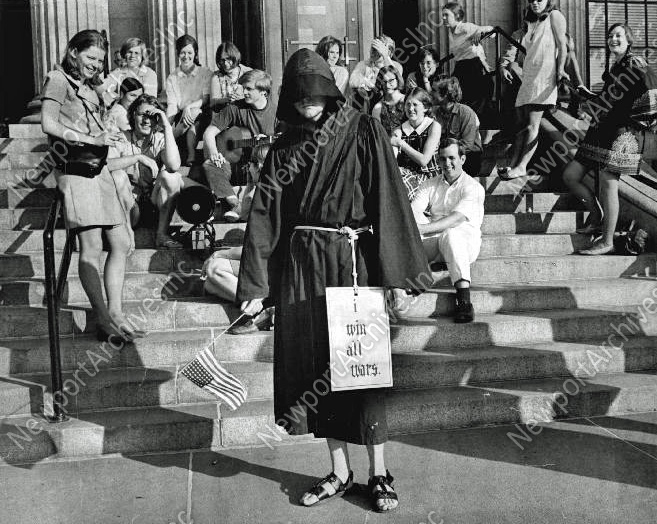
Also in May 1969 was the Battle of Hamburger Hill, a brutal and deadly fight. The battle was televised and Americans looked on with horror. Once the hill was taken it was abandoned and immediately reclaimed by the MVA.
Nixon withdrew 25,000 American troops on June 8, 1969.
October 15, 1969, was Moratorium Day, when the Student Mobilization Committee demanded “Peace Now” and gathered at Northrop Auditorium for speeches by Walter Mondale and Julian Bond. A number of St. Louis Park High School students joined the march to the Federal Building. The protesters had a license for the march from Mayor Stenvig. Others walked out of classes carrying candles. Those at Central Jr. High were told to get away from the windows.
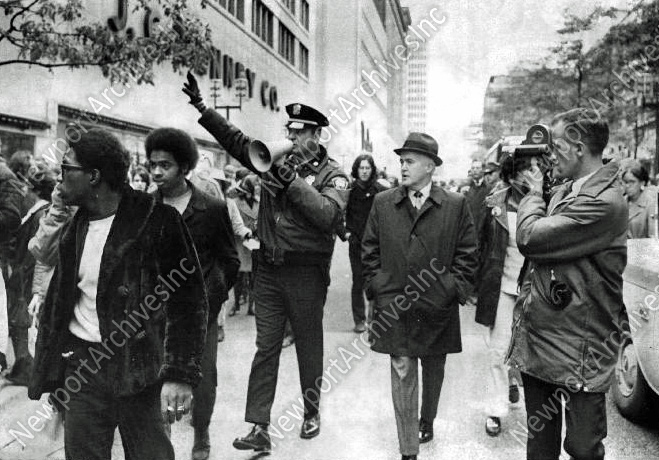
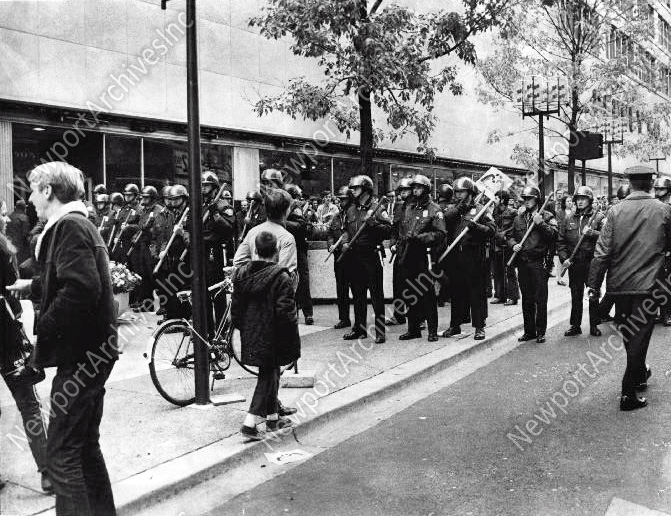
The My Lai Massacre, which took place in March 1968, hit the media in November 1969 and was responsible for people calling veterans “baby killers” upon their return to the States.
After a noon rally at Northrop Auditorium at the University of Minnesota, demonstrators marched to the Old Federal Building in downtown Minneapolis on Thursday, November 13, 1969. The 20-degree weather and a blustery wind kept the crowd to about 2,500, down from the 10,000 that gathered on October 15, 1969. The crowd was reported to be mostly high school and college aged. The Tribune reported that “the first of an expected 1,000 or more Minnesotans left Thursday night for the mass antiwar march in Washington, DC on Saturday. The first bus, containing students from Macalester College, St. John’s College, St. Benedict’s College and the University of Minnesota, took off after a night rally at the Minneapolis Auditorium.”
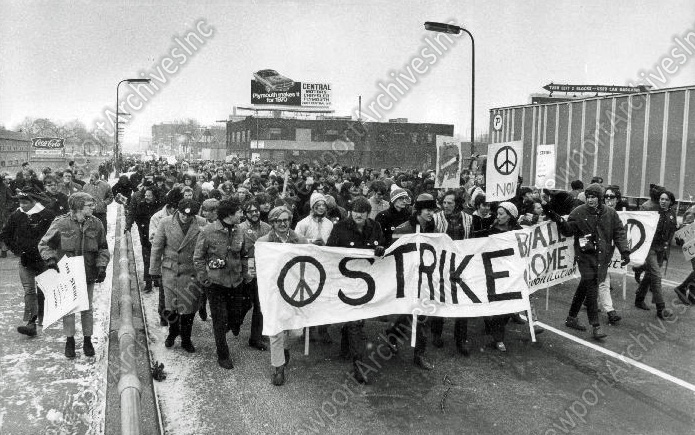
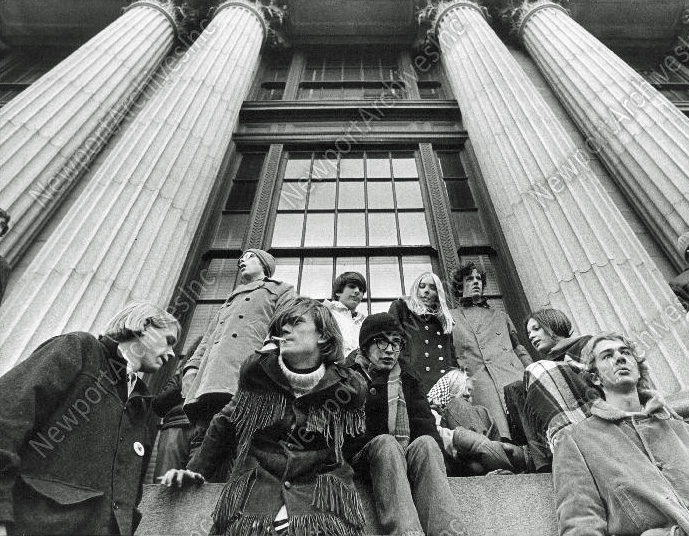
On December 12, 1969, the Honeywell Project leafleted workers at all plants in the Twin Cities, including the St. Louis Park plant, alerting them to the evils of the cluster bombs made at the plant. The Minneapolis Tribune reported:
About 70 persons ignored trespass warnings from Honeywell Inc. security officials Friday and staged a lively but peaceful demonstration on a company-owned street in front of Honeywell’s main office at 2701 4th Ave. So.
Another 70 to 80 persons heeded the warnings and confined their marching to 28th St., which runs along the south side of the company office and parking lots.
No move was made to interfere with the demonstration, and the protesters left after about 45 minutes of marching, singing and slogan shouting.
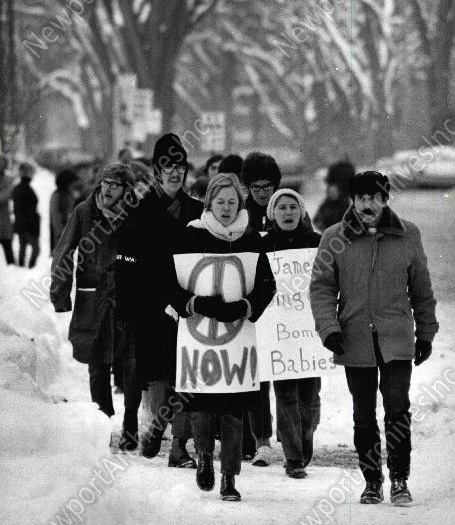
An article in the December 17, 1969 Park High Echo reported that the recently enacted lottery will not affect most Park students this year; those who become 19 years old in 1970 will go into the lottery for 1971. However, there were at least four teachers were eligible for the draft and were seeking teaching deferments. The article also listed various organizations at the U of M:
- The Young Socialist Alliance described themselves as Trotskyist
- Students Against Selective Service, headed by John Crocker
- The Students for a Democratic Society (SDS) in Minneapolis were aligned with the Worker-Student Alliance. Members were self-declared Maoists. The Weathermen and the Revolutionary Youth Movement had already split from the SDS.
- Student Mobilization Committee to End the War in Vietnam was the force behind moratoria in October and November 1969. Mimi Harary was the regional organizer.
The article also described the conservative Young Americans for Freedom, which was founded in 1960. The organization’s beliefs included:
- Trading with Russia is “national suicide.”
- Social Security is “fraud against young people.”
- The minimum wage is a “crime against the Negro.”
- Victory in Vietnam is an “American imperative.”
At the end of 1969 there were 480,000 U.S. troops in Vietnam.
244 Minnesotans were killed or declared missing in 1969.
1970
The April 8, 1970, Echo announced a three day “Draft Class” for seniors, featuring speakers from the American Friends Service Committee and the Selective Service. The class was instigated by senior Joel Levie.
On April 28, 1970, a group including Jerry Rubin and Dennis Banks marched from the Fair Oaks Park in Minneapolis to Honeywell Headquarters. The demonstration was marred by violence and mace.
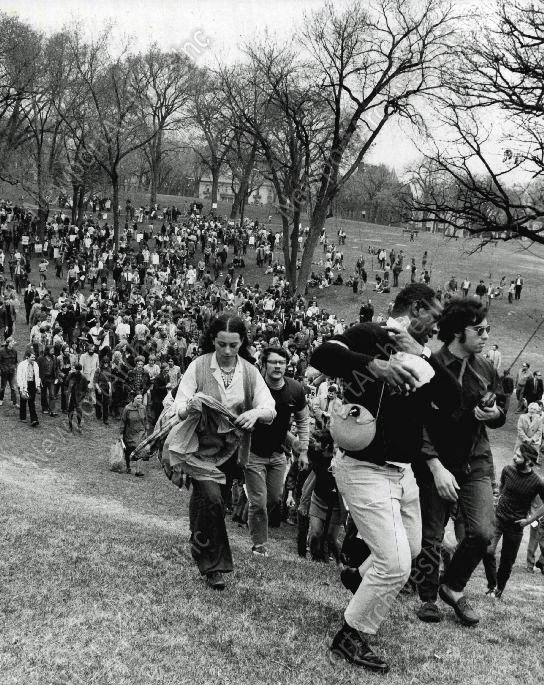
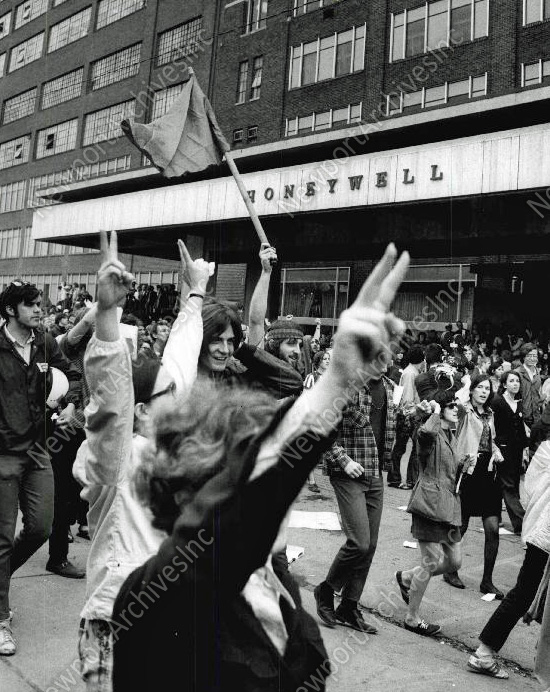
U.S. and South Vietnamese forces invaded Cambodia on April 30, 1970. On May 1 President Nixon announced the expansion to the public. U.S. troops could go no further than 19 miles into the country, for no longer than 2 months.
The radical magazine Hundred Flowers reported that a student strike at the University of Minnesota on May 4 drew 8,000 people outside the student union lasting one week and involving one-fifth of the student population. Demonstrations took place for a week, but the magazine reported that they were poorly organized.
On May 4, 1970, at Kent State University, a similar demonstration took place, but ended in tragedy when Ohio National Guardsmen opened fire on protesting students, killing four and wounding nine others. At least some of those killed turned out to be onlooking students, not protesters.
On May 6, 1970, a Wednesday, approximately 600 Park High students attended a rally after school. Student Irving Barr was a moving force.
On May 7 and 8, 1970, 400-500 Park High students staged a student strike by walking out of their classrooms at 7:45 am. On Friday afternoon, students leafleted the city.
On Saturday, May 9, 1970, approximately 150 Park students joined a March for Peace from Hamline University to the Capitol, with the slogan “No Business as Usual.” An estimated 40,000 people participated in the march, which was organized by Barry Knight. At the end of the march participants heard speakers such as Indian activists Clyde Bellecort and Dennis Banks, and the Paisleys entertained the crowd.
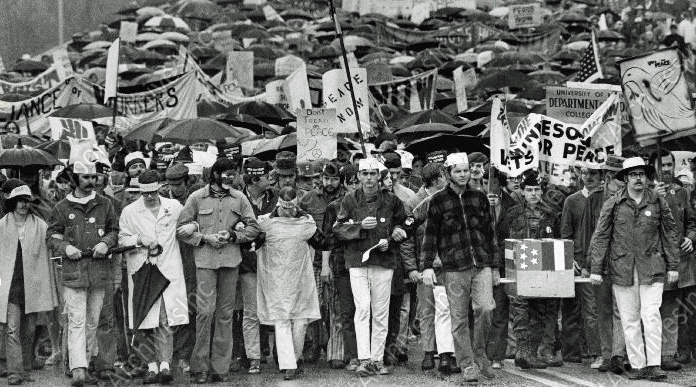
On Monday, May 11, 1970, a meeting was held at the Jewish Community Center, and two factions emerged – those who wanted to keep the activity at the high school level, and those who wanted to involve the entire community. As a result, an organization called Park Action Coalition for Students (PACS) was formed.
On June 4, 1970, PACS sponsored a Teach-In at the high school. B. Robert Lewis of the School Board approved the meeting, as long as the students could pay for the required insurance. The Chamber of Commerce came up with the money. A panel of five speakers spoke to about 150 people.
On May 20, 1970, Margie Levie, Gloria Kamman, and others organized Mothers For Peace, with 50 members. The group carried out a public education campaign, and urged people (among other things) not to pay the 10 percent tax on phone bills levied in 1966 to pay for the war. The group also called for the cessation of all American military involvement in Southeast Asia by the end of 1971.
A program was held at the Jewish Community Center on June 13, 1970, which attracted hundreds of concerned citizens.
The last major confrontation between US and North Vietnamese ground troops was the Battle of Fire Support Base Ripcord, which took place between July 1 and July 23, 1970. Unlike Hamburger Hill, this infantry battle was not televised.
THE MINNESOTA 8
From the website www.minnesota8.net:
The Minnesota 8 was one part of a larger group called “The Minnesota Conspiracy to Save Lives,” whose members raided Selective Service draft boards in various non-urban areas of Minnesota on July 10, 1970. The FBI arrested eight men in three draft boards: Alexandria, Little Falls, and Winona. One other draft raid was successfully conducted that evening [200-250 A-1 records were successfully stolen in Wabasha.] No one from the successful raid, which included a woman, was ever arrested. Three trials were held from November 2, 1970, through January 18, 1971, in the Minnesota Federal district courts in Minneapolis and St. Paul. One of the 8 [Cliff Ulen] pleaded guilty, and he received probation. The other seven received the maximum sentence of five years in Federal prison.
The men were charged with destruction of national defense materials, national defense premises, or national defense utilities.
The Minnesota 8 were:
- Brad Beneke – Minneapolis
- Frank Kroncke – Minneapolis
- Don Olson – Minneapolis
- Pete Simmons – Brooklyn Center
- Bill Tilton – Minneapolis
- Mike Therriault – Minneapolis
- Chuck Turchick – St. Louis Park
- Cliff Ulen – Minneapolis
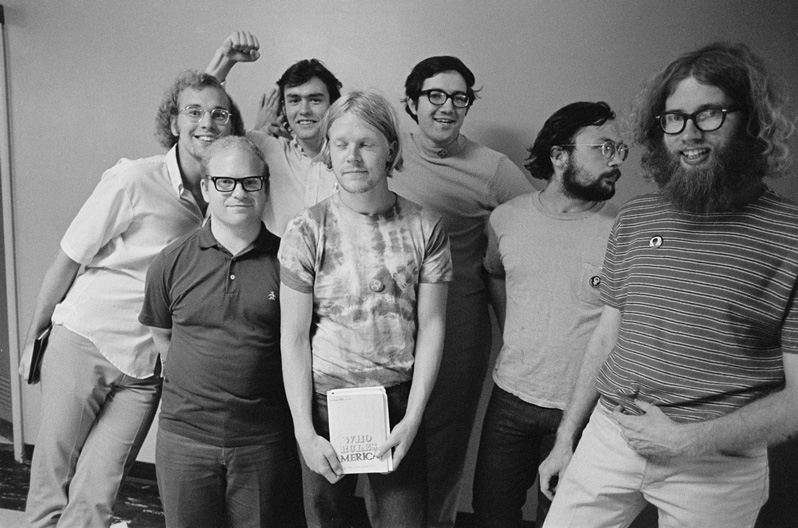
On July 16, 1970, about 300 people marched from the Minneapolis Auditorium to the Hennepin County Courthouse. Members of the group took down the American flag and raised the flag of the Viet Cong; a recent veteran took the flag down. A priest and a woman were arrested but charges were later dropped.
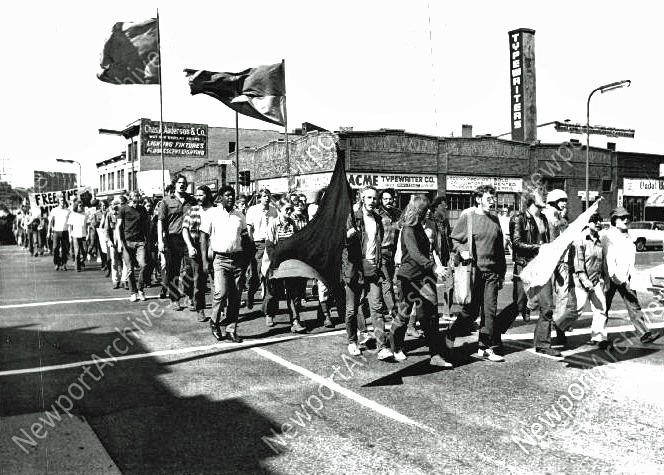
At the end of 1970 there were 280,000 U.S. troops on the ground.
121 Minnesotans were killed or declared missing in 1970.
1971
The American policy had moved to “Vietnamization,” whereas the South Vietnamese were to replace American troops. On February 1, 1971, the South Vietnamese invaded Laos to try to cut off the Ho Chi Minh Trail. The U.S. Congress forbade any American troops to participate, and the action was a failure.
On February 10, 1971, about 250 students marched from the U of M campus to the Federal Building on Washington Ave. downtown. They threw some snowballs, distributed leaflets, and got into “rap groups with people about the war.”
On November 6, 1971, there was a 5-state march on the Minnesota capitol to protest the war in Southeast Asia. The march was endorsed by Governor Wendell Anderson, Senator Walter Mondale, and former Senator Eugene McCarthy. There were 17 such marches around the country. The march was coordinated by Dave Riehle, and included representatives from the gay community, women, veterans, teachers, unions, and local politicians.
At the end of 1971 U.S. troop strength was 140,000.
49 Minnesotans were killed or declared missing in 1971.
1972
THE UNIVERSITY OF MINNESOTA AT WAR
This section is not intended to include every action taken during this tumultuous time, but hopefully captures the highlights. Much of the information for this section comes from the book Take the Streets!, written by Ed Felien. Although he notes that the book was written in the summer of 1972, it was not published until August 2008.
The period between April 11 May 15, 1972 and were fraught with violence: During the worst day, police arrested 33 protesters and hospitals admitted 20 demonstrators and seven police officers.
Felien notes that there were several organizations active at the U of M in 1972. At the time, enrollment was about 45,000 students. Organizations included:
- The New American Movement
- Students for a Democratic Society
- Young Socialist Alliance (“Trots”)
- Student Mobilization Committee
- Minnesota Peace Action Coalition
- Working People for Peace
- Committee of Concerned Asian Scholars
- Minnesota Clergy and Laity Concerned
- Vietnam Veterans Against the War
In the spring of 1972 there were 70,000 U.S. ground troops in Vietnam. The U.S. started bombing North Vietnam for the first time since 1968. The Easter Offensive began on March 30, 1972.
Sunday, April 16, 1972
It was announced that the US was bombing the Port of Haiphong.
Tuesday, April 18, 1972
About 600 U of M students went to the Air Force Recruiting Office in Dinkytown. About 60 protesters went into the office and were locked in by the police until they were let go with the promise to move away from the area.
From there about 200 members of the crowd went to Morrill Hall (the Administration Building) and to demand the end to the ROTC program. Given no satisfaction, the group moved to the ROTC Armory about a block away. Their goal was to shut down the ROTC program, either by persuading University President Malcolm Moos to abolish it or to shut it down physically. The group “took over” the building but by 2:30 pm they had vacated.
That night the Committee of Concerned Asian Students proposed a “Camp In” on the Mall. In all, the night-time protest was peaceful.
Wednesday, April 19, 1972
The second night of the Camp In was not so quiet – Felien reports that just as everyone was going to sleep, groundskeepers started to spray the area with herbicides.
Thursday, April 20, 1972
1,000 people came to a noon rally and about 600 moved to Morrill Hall for speeches and music. One of the plate glass doors of the building was broken during a surge to break through police lines. This demonstration was over by 5:00 pm. That night the Camp In was disturbed by the sound of jackhammers at about 2:30 am.
Friday, April 21, 1972
A snowstorm kept people away, but Felien reports that “about 43 hearty soulds still had fight enough to charge the administration building and close it down again.”
Monday, April 24, 1972
President Moos sent a telegram to Nixon that read, in part, “I implore you to order the end of the bombing and to expedite the total and complete withdrawal of all American armed forces from Southeast Asia.”
The Minnesota Clergy and Laity Concerned demonstrated at the New Federal Building in downtown Minneapolis, with about 80 participants.
Tuesday, April 25, 1972
A “Day of Reflection” Rally on the steps of Northrop Auditorium featured professor Mulford Q. Sibley, who urged students on to further militancy. At about 1:30 pm, the about 150 people left at the rally moved over to Morrill Hall, but were not able to close it down.
Wednesday, April 26, 1972
The Honeywell Project organized a march of about 600 protesters from the Art Institute to Honeywell headquarters in Minneapolis. The march was times to coincide with a stockholders meeting.
Monday, May 8, 1972
It was announced that the U.S. was blockading and mining Haiphong Harbor.
Tuesday, May 9, 1972
1,500 students held a rally on Northrop Mall.
Wednesday, May 10, 1972
It was a day of violence, starting with an antiwar rally on Northrop Plaza that drew about 2,000 people. From there the crowd headed to the Air Force Recruiting Station in Dinkytown, but the officers had moved out. The crowd, which had grown to about 3,000, headed to the University Armory, but failed in the attempt to occupy the building. Instead they smashed windows and used a wrought iron fence that was torn from the front of the building to block traffic on University Avenue. Felien reports that a Frat house donated a junk car and set it on fire. Mayor Stenvig sent the Minneapolis Police Tactical Squad to establish law and order, and CN, CS, and pepper gas was used to disperse the crowd; 32 people were arrested.
Once University Ave. was cleared at about 4:30 pm, the crowd moved to Washington Ave. and Church Street, in front of Coffman Union. About 1,500 students occupied Washington Ave. while another 500 protesters sat in the middle of Oak Street, five blocks north. About 70 police carrying clubs and wearing gas masks forced the crowd down Washington to join the others at Church Street. A barricade was built across Washington Ave., 10 ft. high and 10 ft. wide, made of chain link fence, trash cans, cement blocks, lumber, and whatever else the protesters could find. After a battle the police were called off because of fatigue, and about 300-500 protesters stayed at the barricade all night, playing rock ‘n’ roll and sitting around bonfires.
Governor Wendell Anderson called in 150 National Guardsmen, and they secured the Recruiting Station and Armory.
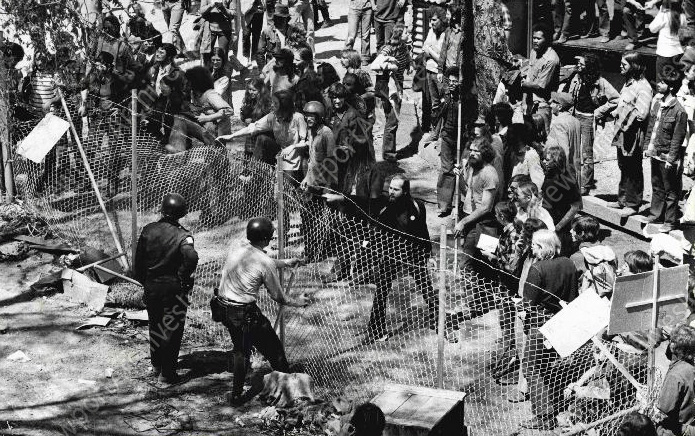
Thursday, May 11, 1972
The usual noon rally drew 2,000 to 3,000 people, and one of the 25 speakers was Eugene McCarthy, who was running for President at the time. A tense moment came when trucks filled with M-16 rifles were being delivered to the Armory – the Guardsmen in charge were convinced that it was a huge mistake and took them away.
From about 4:30 to 5:30 pm, about 1,000 protesters marched to Interstate 94 at the University Ave. exit. About 200 people moved into the freeway, blocking lanes in both directions. Felien says that the blockade was meant to open debate, and only lasted an hour.
The Tribune reported that “University officials spent the day in conference with city and state officials seeking ways to avoid a violent confrontation between students and some 150 National Guardsmen…”
After another night of bonfires at the barricade on Washington Ave., at 5 am the Tactical Squad and the Guardsmen came and removed the barricade using eight dump trucks and two front-end loaders.
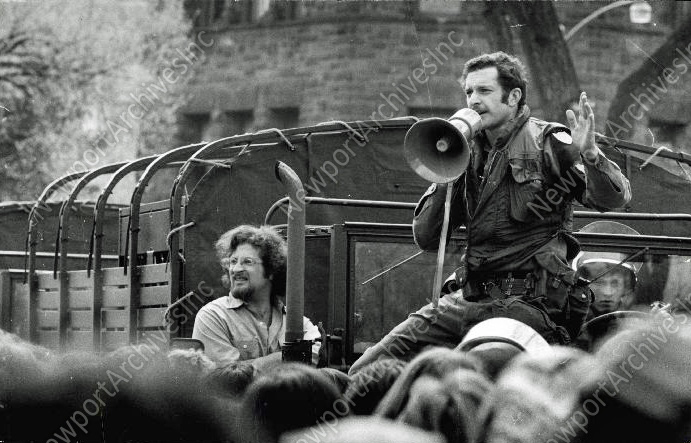
Friday, May 12, 1972
Friday came in gray and cold. At the noon rally at Coffman Union, a new group called the Constituent Assembly was proposed as a permanent organization that would consist of two members (one male, one female) of existing groups, and one representative from every group of 20 protesters at the rally. 2,000 to 3,000 people headed to Washington Ave., and about 1,000 people helped build another barricade. At 1:50 pm President Moos appeared and asked them to remove the barricade. By now people were tired – the police backed off, people went home, and although more barricades were built, at 4:30 am the police came with bulldozers and took them down, serenaded by protesters singing “Give Peace a Chance.”
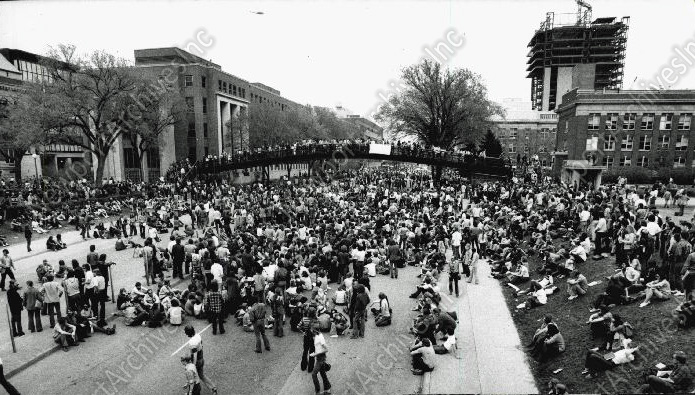
Saturday, May 13, 1972
A march to the State Capitol in St. Paul was planned, with a goal of 50,000 to 100,000 participants, but rain kept the crowd to about 12,000. After a rally at Northrop Auditorium, the marched went along the river and down Summit Ave., although at Selby Ave. about 2,000 people broke off with the intent to engage people in St. Paul’s ghetto. Felien estimates that about 100 people joined the march. They were also joined along the way by additional groups, primarily from other colleges. By 5:30 pm it was all over.
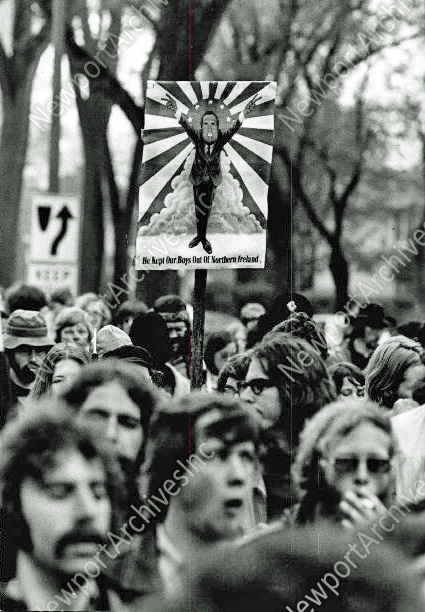
Sunday, May 14, 1972
President Moos called an open meeting to coordinate anti-war activities, which was attended by about 100 people. The protesters presented their demands to abolish the ROTC and all secret was research. Felien reports that Moos left the meeting, complaining about the domination of the discussion by Paula Giese, an outspoken Humanities professor.
Monday, May 15, 1972
About 1,000 students were on strike, and the noon rally went on as usual. 200 to 300 people marched to Morrill Hall to reiterate the demands of the day before, and Moos came out but failed to satisfy. The decision was made to occupy Johnston Hall at about 1:45 pm but they weren’t sure what their purpose was. All they could do was hold up employees’ paychecks, which were generated there, which they did for about three hours. They left through the windows, and Felien says, “The occupation of Johnston Hall was the last act of civil disobedience. Defiance of authorities had sputtered out and stalled.”
One question was what to do about the rest of the academic quarter? Dr. Edward Coen, Economic Professor (and father of St. Louis Park’s Joel and Ethan Coen) proposed that faculty grade students based on their work up to May 11. This proposal was voted down by the Administration, as was a proposal to suspend all classes. Many classes were suspended, and it appears that the situation was met on a case-by-case basis.
In October 1972 POW/MIA bracelets could be found on the wrists of many Park High and Junior High school students. Each bracelet had the name and other information on a soldier who was a prisoner of war or missing in action in Vietnam. Often they were returned to the families of the men, especially if they were killed in action.
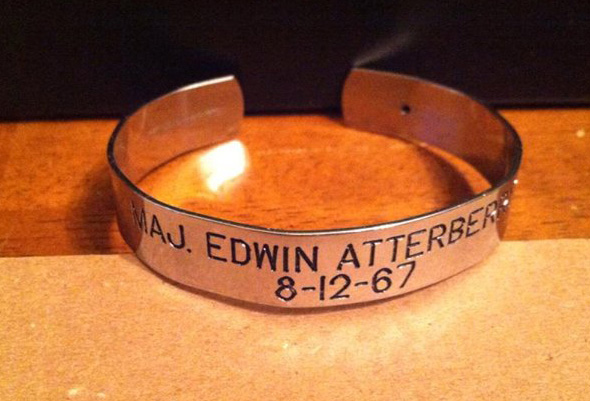
In October 1972 a draft cease-fire agreement was readied, but South Vietnam wouldn’t sign.
In December 1972 U.S. airpower bombed Hanoi and the Haiphong Harbor.
By the end of 1972 U.S. combat troops numbered less than 30,000.
12 Minnesotans were killed or declared missing in 1972.
1973
Only when President Nixon secretly promised to bring back American bombers if North Vietnam violates the treaty would the South agree to sign the Paris Peace Accords on January 27, 1973.
The first 91 American POWs were freed in February 1973. Some had been held for nine years.
The United States ceased offensive ground operations and the majority of its troops withdrew from Vietnam by March 29, 1973. It retained an embassy in Saigon.
The last American POWs arrived at Clark Air Force Base.
Three Minnesotans were killed or declared missing in 1973.
1974
North Vietnam escalated fighting against South Vietnam.
President Nixon resigned on August 9, 1974, and Gerald Ford became President.
1975
On March 1, 1975, the North attacked the South and Ford did not honor Nixon’s secret promise to bring back American bombers.
On April 30, 1975, 2,000 people, including South Vietnamese officials and the last of the U.S. Marines, were evacuated from the U.S. Embassy in Saigon. Four hours later, the MVA entered the city.
With the Northern victory, the country was unified as the Socialist Republic of Vietnam with a communist-controlled government based in the new capital of Hanoi.
Of approximately 60,000 Minnesotans who served in Vietnam, 1,120 were killed or declared missing. The Department of Defense counts 1,077 fatal casualties of the Vietnam War for Home-State-of-Record Minnesotans.
